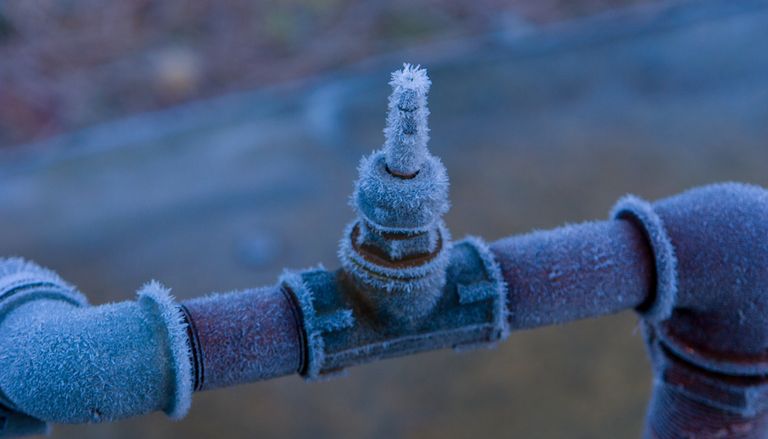Tips to Keep Your Pipes from Freezing Issues: Crucial Advice
Tips to Keep Your Pipes from Freezing Issues: Crucial Advice
Blog Article
The article which follows pertaining to 6 Ways to Prevent Frozen Pipes is highly informative. Check it out for your own benefit and figure out what you think of it.

Winter can ruin your plumbing, especially by freezing pipes. Here's how to avoid it from happening and what to do if it does.
Introduction
As temperatures decrease, the threat of icy pipes boosts, potentially resulting in pricey repair services and water damages. Comprehending just how to prevent icy pipes is vital for homeowners in cool climates.
Understanding Frozen Pipes
What causes pipes to ice up?
Pipelines freeze when revealed to temperatures below 32 ° F (0 ° C) for prolonged durations. As water inside the pipelines freezes, it expands, taxing the pipeline wall surfaces and potentially causing them to break.
Threats and problems
Frozen pipelines can bring about water supply interruptions, residential property damages, and costly repair services. Burst pipes can flood homes and trigger extensive architectural damage.
Signs of Frozen Water Lines
Identifying frozen pipelines early can avoid them from rupturing.
How to identify frozen pipes
Look for lowered water circulation from faucets, uncommon odors or sounds from pipes, and noticeable frost on revealed pipes.
Avoidance Tips
Insulating prone pipelines
Cover pipelines in insulation sleeves or make use of warmth tape to shield them from freezing temperatures. Concentrate on pipes in unheated or external areas of the home.
Heating strategies
Maintain indoor spaces adequately heated, especially locations with plumbing. Open up cupboard doors to allow warm air to circulate around pipes under sinks.
Protecting Outside Plumbing
Garden tubes and outside faucets
Disconnect and drain pipes garden hoses before winter months. Set up frost-proof spigots or cover exterior faucets with shielded caps.
What to Do If Your Pipes Freeze
Immediate activities to take
If you presume frozen pipelines, keep taps available to relieve stress as the ice thaws. Utilize a hairdryer or towels taken in hot water to thaw pipelines slowly.
Long-Term Solutions
Architectural adjustments
Think about rerouting pipelines away from outside walls or unheated locations. Include additional insulation to attic rooms, cellars, and crawl spaces.
Upgrading insulation
Buy top quality insulation for pipelines, attics, and walls. Appropriate insulation aids maintain regular temperatures and decreases the threat of icy pipelines.
Verdict
Avoiding frozen pipes needs aggressive procedures and quick actions. By comprehending the reasons, signs, and safety nets, house owners can secure their plumbing during cold weather.
5 Ways to Prevent Frozen Pipes
Drain Outdoor Faucets and Disconnect Hoses
First, close the shut-off valve that controls the flow of water in the pipe to your outdoor faucet. Then, head outside to disconnect and drain your hose and open the outdoor faucet to allow the water to completely drain out of the line. Turn off the faucet when done. Finally, head back to the shut-off valve and drain the remaining water inside the pipe into a bucket or container. Additionally, if you have a home irrigation system, you should consider hiring an expert to clear the system of water each year.
Insulate Pipes
One of the best and most cost-effective methods for preventing frozen water pipes is to wrap your pipes with insulation. This is especially important for areas in your home that aren’t exposed to heat, such as an attic. We suggest using foam sleeves, which can typically be found at your local hardware store.
Keep Heat Running at 65
Your pipes are located inside your walls, and the temperature there is much colder than the rest of the house. To prevent your pipes from freezing, The Insurance Information Institute suggests that you keep your home heated to at least 65 degrees, even when traveling. You may want to invest in smart devices that can keep an eye on the temperature in your home while you’re away.
Leave Water Dripping
Moving water — even a small trickle — can prevent ice from forming inside your pipes. When freezing temps are imminent, start a drip of water from all faucets that serve exposed pipes. Leaving a few faucets running will also help relieve pressure inside the pipes and help prevent a rupture if the water inside freezes.
Open Cupboard Doors
Warm your kitchen and bathroom pipes by opening cupboards and vanities. You should also leave your interior doors ajar to help warm air circulate evenly throughout your home.

I'm very fascinated by Prevent Frozen Pipes and I'm hoping you enjoyed reading the page. Do you know someone else who is looking into the niche? Please feel free to share it. Thanks so much for taking the time to read it.
Click Here Report this page